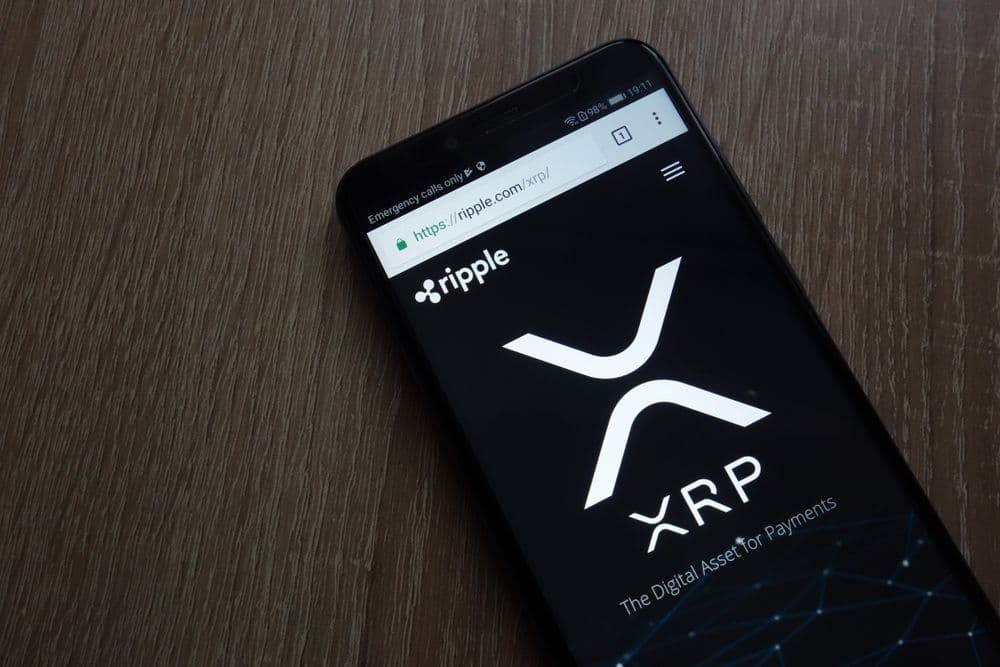Swiss-based AMINA Bank has officially become the first globally operating bank to support Ripple’s new U.S. dollar-pegged stablecoin, RLUSD, launching custody and trading services for institutional clients and professional investors. The move marks a significant step in the integration of regulated stablecoins into mainstream banking infrastructure and adds momentum to Ripple’s strategy to position RLUSD as a trusted, compliance-first digital dollar alternative.
Announced on July 4, the initiative underscores AMINA Bank’s ambition to bridge traditional finance with blockchain-based assets, reinforcing its role as a global crypto-banking pioneer. The bank will initially focus on custody and trading of RLUSD, with plans to roll out additional services linked to the stablecoin over the coming months.
The announcement comes as the global stablecoin market - now valued at over $250 billion - enters a new phase of adoption, regulation, and competition. AMINA Bank’s support for RLUSD represents the first time a licensed, globally active bank has formally integrated Ripple’s stablecoin into its core offerings, placing it ahead of rivals in the regulated stablecoin custody and trading arena.
Ripple’s RLUSD stablecoin, which debuted in June 2025, is fully backed by U.S. dollar deposits and short-term Treasuries. It is regulated by the New York Department of Financial Services (NYDFS), aligning it with stricter transparency and reserve management standards - an increasingly important requirement as regulators worldwide scrutinize stablecoin issuers.
According to data from Ripple, RLUSD’s current circulating supply stands at around $430 million, a modest figure compared to leaders like Tether or Circle’s USDC, but significant given its rapid growth trajectory and regulatory credentials. The token is designed to power transactions across Ripple’s XRP Ledger and Ethereum via compatibility layers, enabling low-cost, real-time settlement for payments, treasury management, and tokenized asset flows.
By offering custody and trading for RLUSD, AMINA is betting on growing institutional demand for stablecoins that meet regulatory and operational risk requirements.
“Institutional clients are looking for digital assets that offer both compliance and utility,” said a spokesperson for AMINA. “RLUSD fits within that framework, and we see it as a strategic tool for enhancing client access to tokenized dollars with trusted backing.”
A Global First: AMINA’s Expanding Regulatory Footprint
AMINA Bank, previously known as SEBA Bank, is headquartered in Zug - Switzerland’s “Crypto Valley” - and operates under the supervision of the Swiss Financial Market Supervisory Authority.
In addition to its Swiss base, the bank has regulatory licenses and operations in Abu Dhabi and Hong Kong, allowing it to serve clients across key financial hubs in Europe, the Middle East, and Asia.
This international presence makes AMINA uniquely positioned to offer RLUSD custody and trading on a global scale, a point the bank emphasized in its announcement. While several fintech platforms and crypto-native custodians have added RLUSD in recent weeks, AMINA is the first bank with a multi-jurisdictional regulatory footprint to provide direct institutional access to the stablecoin.
According to industry analysts, this could accelerate RLUSD’s integration into cross-border finance, tokenized securities, and institutional DeFi strategies, particularly as global regulations around stablecoins continue to evolve.
Stablecoins Enter Mainstream Finance
The broader context surrounding AMINA’s move is the rapid maturation of the stablecoin ecosystem. Once confined to crypto exchanges and DeFi protocols, stablecoins are now being considered strategic payment and liquidity tools by both governments and global financial institutions.
In Europe, the Markets in Crypto-Assets Regulation is set to introduce a comprehensive legal framework for stablecoins by the end of 2025. Meanwhile, in the U.S., bipartisan proposals in Congress are pushing for oversight of stablecoin issuers, including requirements for 1:1 reserves, monthly attestations, and clear redemption mechanisms.
This environment has prompted a new generation of stablecoins, like RLUSD, to prioritize transparency, on-chain verifiability, and regulatory compliance from day one.
AMINA’s move may foreshadow a wider trend of regulated banks incorporating stablecoin services—not just for speculative purposes, but to enable efficient cash management, cross-border remittances, and integration with tokenized capital markets.
Ripple’s Institutional Push and Competitive Positioning
Ripple’s launch of RLUSD is part of a broader effort to deepen its presence in the institutional payments and asset tokenization space.
The company has long positioned itself as a bridge between traditional finance and blockchain, with clients ranging from remittance firms to central banks piloting digital currency initiatives.
The introduction of RLUSD adds a key building block to Ripple’s infrastructure, enabling U.S. dollar settlements on the XRP Ledger and Ethereum-compatible networks without relying on external stablecoins like USDC or USDT.
Ripple CEO Brad Garlinghouse has previously said that stablecoins are critical to the future of blockchain-based finance and that RLUSD aims to become a trusted liquidity rail for enterprises, fintech firms, and banks operating in regulated markets.
With AMINA Bank now on board, Ripple gains a powerful distribution partner that can expose RLUSD to a global audience of regulated institutions, family offices, and high-net-worth individuals - segments historically underserved by crypto-native platforms.
What’s Next for RLUSD and AMINA?
AMINA Bank has stated that its initial RLUSD services will include secure institutional-grade custody and trading functionality, with more offerings expected later in 2025.
These may include tokenized savings products, on-chain collateral services, or integration into tokenized securities platforms being developed under Switzerland’s DLT Act.
Given its license under FINMA, AMINA has the regulatory tools to launch these services within a legal framework that other banks - especially in the U.S. - are still waiting to clarify.
For Ripple, the partnership reinforces RLUSD’s use case beyond crypto exchanges, adding to its credibility as a bank-grade stablecoin ready for real-world finance.
As more banks explore how to offer stablecoin services within regulated environments, AMINA’s early-mover advantage may give it a critical head start - while also signaling how fast the institutional adoption of tokenized dollars is accelerating.

